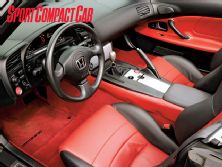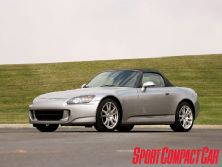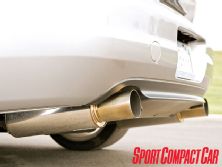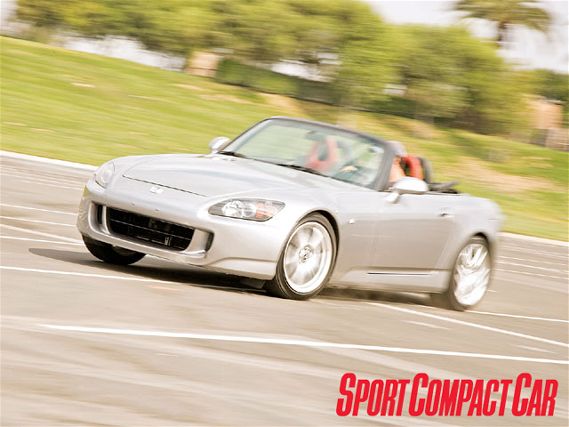 | 2005 Honda S2000 - Project S2200 - Tech
| 2005 Honda S2000 - Project S2200 - Tech
In an age when cars can park themselves and predict crashes right before they happen, the Honda S2000 seems downright antiquated. The suspension can't be adjusted on the fly and local traffic conditions aren't monitored through a voice-activated navigation system. Heck, the tail-happy S2000 didn't even have stability and traction control until 2006 and the steering wheel still doesn't tilt. But it's this simplicity or, better put, purity that we love about the S2000. It's an instrument designed with only one purpose: driving pleasure.
You might be wondering what happened to the last S2000 that passed through our project car fleet. A former staff member owned that first-gen model and when he left, the car went with him. But the S2000 has such potential, it would be a shame not to give one example the full project car treatment. So we've re-entered the S2000 fray with a latermodel 2.2-liter version, dubbed Project S2200.
To the uninformed, the Honda brand conjures images of boring front-wheel-drive family sedans. Soul-less, practical, base-model appliances for getting from A to B. But that image couldn't be further from the truth. Long before the company was created, its founder, Soichiro Honda, worked as a racing driver and apprentice mechanic at Art Shoukai, a small garage in Tokyo, during the mid-1920s. By the 1950s, Honda's passion and knowledge of racing led to his creation of the Honda Motor Company, through which he planned to attack the European motorcycle racing circuit.
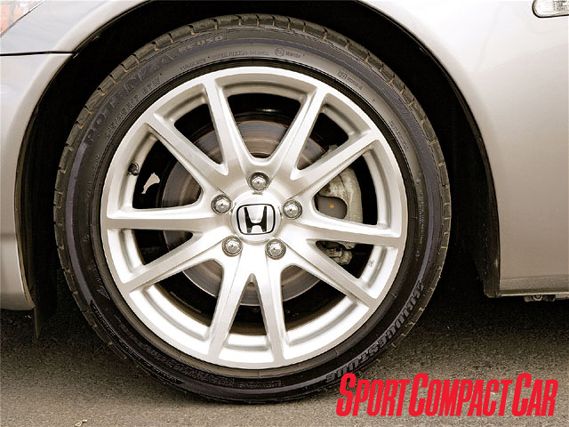 | 2005 Honda S2000 - Project S2200 - Tech
| 2005 Honda S2000 - Project S2200 - Tech
With technological innovation as the company's trademark, Honda came to dominate the sport, its high-revving motorcycles obliterating the competition and taking a first world championship title in 1961. Honda went on to produce cars in 1962. Its first, not surprisingly, was a sports car: the S500 roadster-a car that eventually became the spiritual precursor of the S2000. By 1970, this had evolved into the more powerful S800.
By the mid-1990s, after dominating Formula One (Honda engines helped win six consecutive constructor's championships between 1986 and 1991) and building a successful supercar (the NSX), Honda was ready to return to its sports car roots with a small roadster. Although the NSX ended up being a mid-engine coupe powered by a V6, its original concept was a four-cylinder roadster. When the time came to build another sports car, it made sense for Honda to resolve unfinished business and build a lightweight four-cylinder roadster.
Honda made certain that the S2000's F1 bloodline was apparent. When introduced, the car featured a naturally aspirated 2.0-liter powerplant, called the F20C, that shrieked to an incredible 9000rpm and produced 240bhp-an amazing 120bhp per liter. Beginning in 2004, the F20C engine was upgraded to 2.2 liters and, as a result, realized an increase in useful torque at somewhat lower revs. Redline, however, was lowered from 9000rpm to 'only' 8000rpm.
Compared to the original 2.0-liter motor, the F22C produces slightly more peak torque (162lb-ft vs. 153lb-ft) at only 6200rpm instead of at 7500rpm, as rated by Honda. That may not seem like much, but remember, this is still a Honda. Finding an extra 9lb-ft is harder than questing for the Holy Grail.
Even better, early S2000s can now be picked up on the used market from $10,000 to $13,0000, depending on condition. If you're looking to buy one, be aware of possible overrevving due to a missed shift, or excessive wear by aspiring Ayrton Sennas. Other things to look out for include fading plastic rear windows in the convertible top (later models used a glass window), heavy track abuse and, of course, the usual smoking and whining associated with a car that's about to blow up.
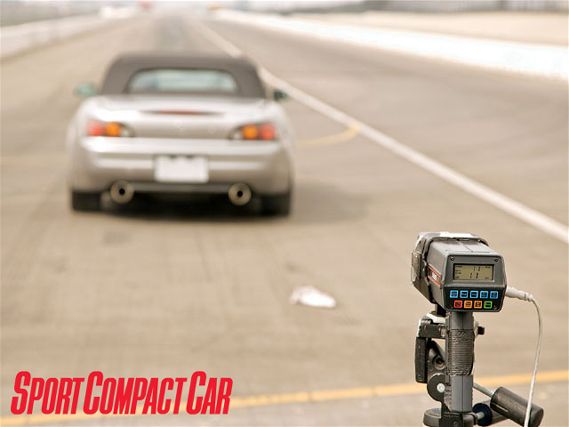 | 2005 Honda S2000 - Project S2200 - Tech
| 2005 Honda S2000 - Project S2200 - Tech
Given its racing heritage and relatively low price, the S2000 is an obvious choice for a Sport Compact Car project. However, it's a project that must be carried out with caution. Because it comes so well tuned from the factory, the S2000 does not respond well to certain modifications. Poorly designed parts can easily degrade performance, so choosing our modifications carefully will be crucial.
Project S2200 is a used 2005 S2000, painted in Silverstone metallic with a red and black leather interior. It has approximately 16,000 miles on the clock and several minor modifications already installed, including an HKS Hi-Power exhaust and a Whiteline X-brace. Since Project S2200 was produced after 2004, it features the 'torquey' 2.2-liter F22C motor as well as the revised AP2 second-gen chassis. Because of alterations in the spring rates and shock absorber damping, as well as revisions to the rear suspension geometry, the AP2 chassis is less prone to snap oversteer, compared to the original AP1.
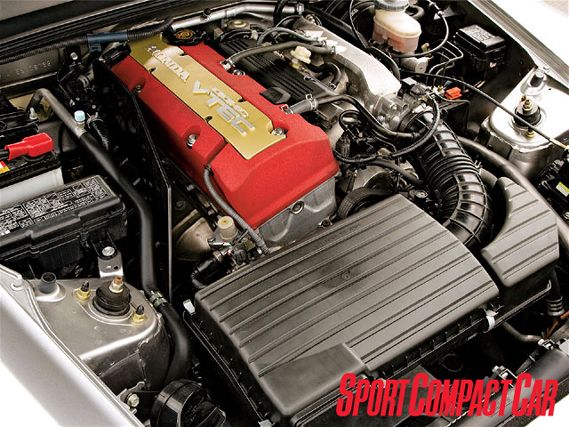 | 2005 Honda S2000 - Project S2200 - Tech
| 2005 Honda S2000 - Project S2200 - Tech
The goal for Project S2200 will be to sharpen what's already great about the stock car while maintaining the ability to drive it on a daily basis. We've seen many street-legal, track-day S2000s lay down lap times that no 240bhp convertible should be capable of. Our aim is to do the same. No massive turbo or roll cage for this S2000. Well, for now. Instead, we'll focus on modifications that address the weaknesses in the S2000's design and bump up performance without sacrificing reliability or greatly reducing driveability on public roads. Our build will be executed in four stages: handling, braking, power and refinement.
Before slapping on any parts, it was off to California Speedway in Fontana, California, to get some baseline performance figures. In a straight line, our car ran from zero to 60 mph in 5.8 seconds and hit the quarter-mile in 14.3 seconds at 98 mph.
These are respectable times considering the horsepower level. But remember: the S2000 is not a dragster. The car requires high revs off the line and these hard starts can be brutal on the drivetrain, which isn't designed to handle heavy shock loads.
After acceleration, we put the brakes to the test and recorded a 219-foot stopping distance from 80mph to a dead stop. Finally, we ran the figure eight to determine handling performance, where we managed a 24.3- second course time and an average skidpad number of 0.89 lateral g on stock Bridgestone RE050 tires.
Now we're looking forward to getting our hands on some handling-related parts to begin stage one. Although we've yet to determine exactly what we'll be using, we'll likely go with a set of adjustable coilovers, a rear antibumpsteer kit, some chassis bracing and a set of lightweight 17-inch wheels wrapped in sticky rubber. With such high potential in stock trim, we're excited to see how much we can improve upon this already fantastic machine.

